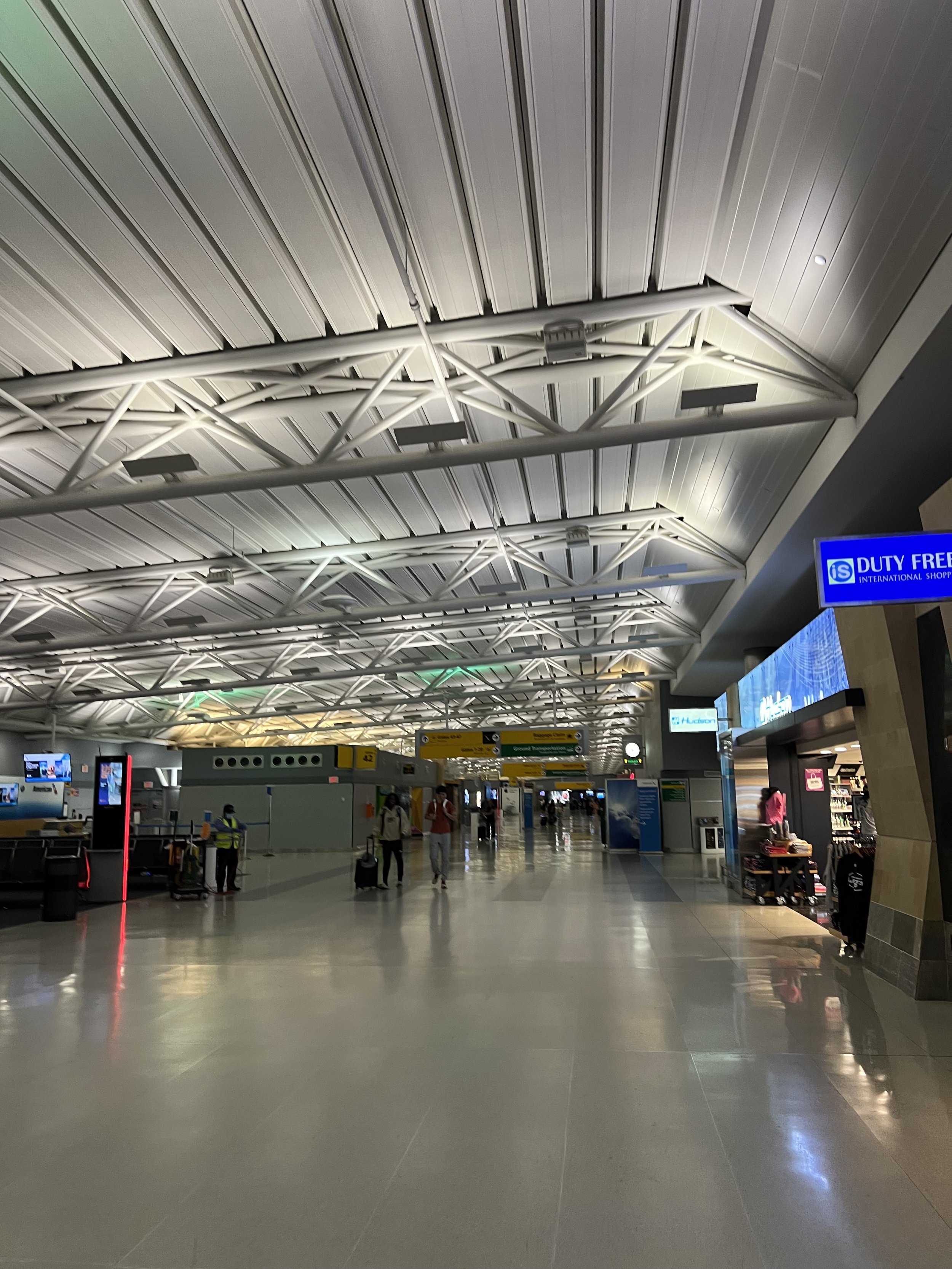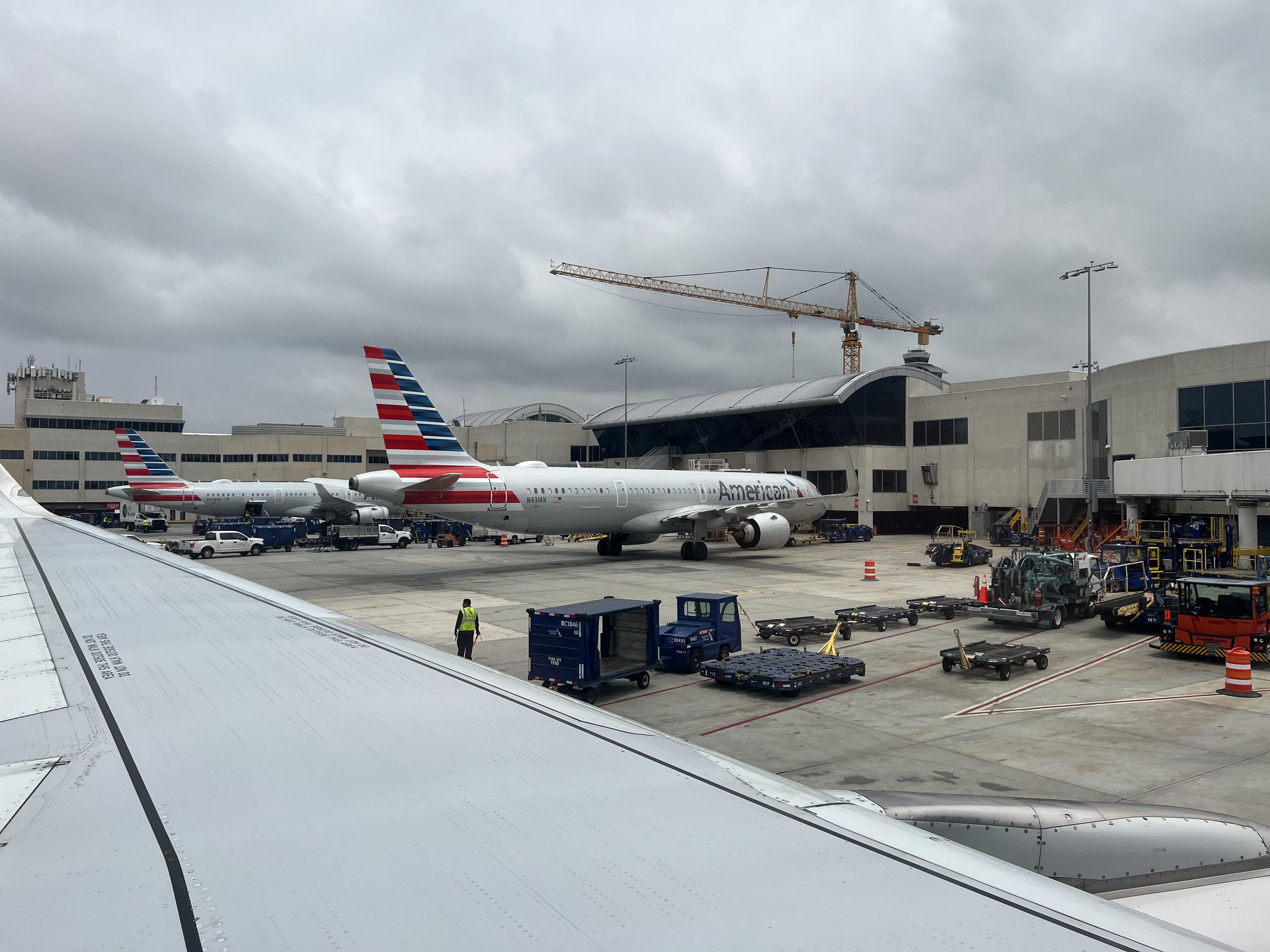Flying TrAAnscon in the United States
Originally published on Airways
New York (JFK) to Los Angeles (LAX) is one of the premier and most frequented airline routes in the world. And it’s easy to see why.
These are two of the most populated cities in the United States. On this heavily competitive route, airlines offer their most premium products, whether it’s American Airlines (AA) Flagship First/Business Class, Delta (DL) One, or JetBlue (B6) Mint.
In mid-June, I had to travel from New York to Los Angeles, and I decided to fly on American Airlines’ Flagship Business Class aboard the Airbus A321T, where the ‘T’ denotes ‘transcontinental’. Since 2014, American Airlines has operated a sub-fleet of 17 A321 aircraft specially configured for a few select high-profile domestic routes. On these routes, there is a strong demand for a premium product that is considerably better than what First Class offers on most domestic routes.
AA uses this Airbus type for its top-premium cabin configurations, which feature fully lie-flat seats in both First and Business Class. That said, American has announced that it will discontinue its Flagship First Class product sometime this year. American will replace its A321Ts with Airbus A321XLRs equipped with a new Business product.
American Airlines operates the A321T on its most premium transcontinental routes, including New York JFK to San Francisco, Los Angeles, and Orange Country; and Los Angeles to Boston and Miami.
On The Ground
On June 16, I made my way to New York’s John F. Kennedy International Airport two and a half hours before my flight. After dropping off a rental car, I took the JFK AirTrain to Terminal 8, where American Airlines operates alongside fellow oneworld Alliance members British Airways (BA), Qatar Airways (QR), and Finnair (AY). Recently, Terminal 8 underwent a US$400 million dollar redesign, reopening in November 2022 for joint operations for both British Airways and American, the two airlines that had broken ground on the new project in January 2020. The revamp brought five new wide-body gates, an enhanced baggage handling system, and almost 130,000sq ft of renovated terminal space.
American Airlines and British Airways operate jointly out of Terminal 8 at New York JFK.
My first stop was at the podium outside of the Flagship First Check-In area, which, besides JFK, is available at only four other AA hubs: Chicago O’Hare (ORD), London Heathrow (LHR), Los Angeles (LAX), and Miami (MIA). In order to access it, you must be flying American’s Flagship First on a qualifying international or transcontinental flight, or be a ConciergeKey member.
After quickly checking in with an agent inside the private check-in area, I was escorted to the public TSA lines, where I was processed quickly thanks to PreCheck. From there, it was a quick walk to the American Airlines’ Chelsea Lounge. When British Airways moved to Terminal 8, in late 2022, the two airlines partnered to open three joint premium lounges in the terminal – the Greenwich, Soho, and Chelsea Lounges. The Chelsea and Soho Lounges are located right next to each other, above Gate 14, while the Greenchich Lounge is above Gate 12 in the old Flagship Lounge space.
The Chelsea Lounge, which replaced Flagship First Dining, is a true First Class lounge and the most exclusive of the three. It was designed to resemble BA’s Concorde Room. The Soho Lounge is an all-new space open to oneworld Emerald members on select itineraries and is akin to BA’s Galleries First lounge. Lost but not least, the Greenwich Lounge is open to select Business Class passengers on all oneworld airlines, as well as to oneworld Sapphire members on select itineraries.
Chelsea Lounge
I took the elevator up one level, to the Chelsea Lounge, which is advertised as AA’s ‘most exclusive lounge’ and definitely lived up to the expectations. As I walked in, I was immediately greeted by a beautiful Champagne bar with marble and gold accents. The lounge features elegant furnishings, seating areas, a fireplace, and a relaxation area. Apart from the relaxation area, the entire lounge is basically one big room. However, there are no windows. The lounge is almost 10,000sq ft and can seat 128 passengers.
Once settled, I headed to the à la carte dining room, where a staff member seated me in the restaurant-style area. As it was early in the morning, I was given a breakfast menu that featured an array ranging from American classics such as French toast and the American breakfast to British favorites such as eggs benedict and English porridge. I ordered sourdough avocado toast and smoked salmon carpaccio, which were served in fewer than 10 minutes.
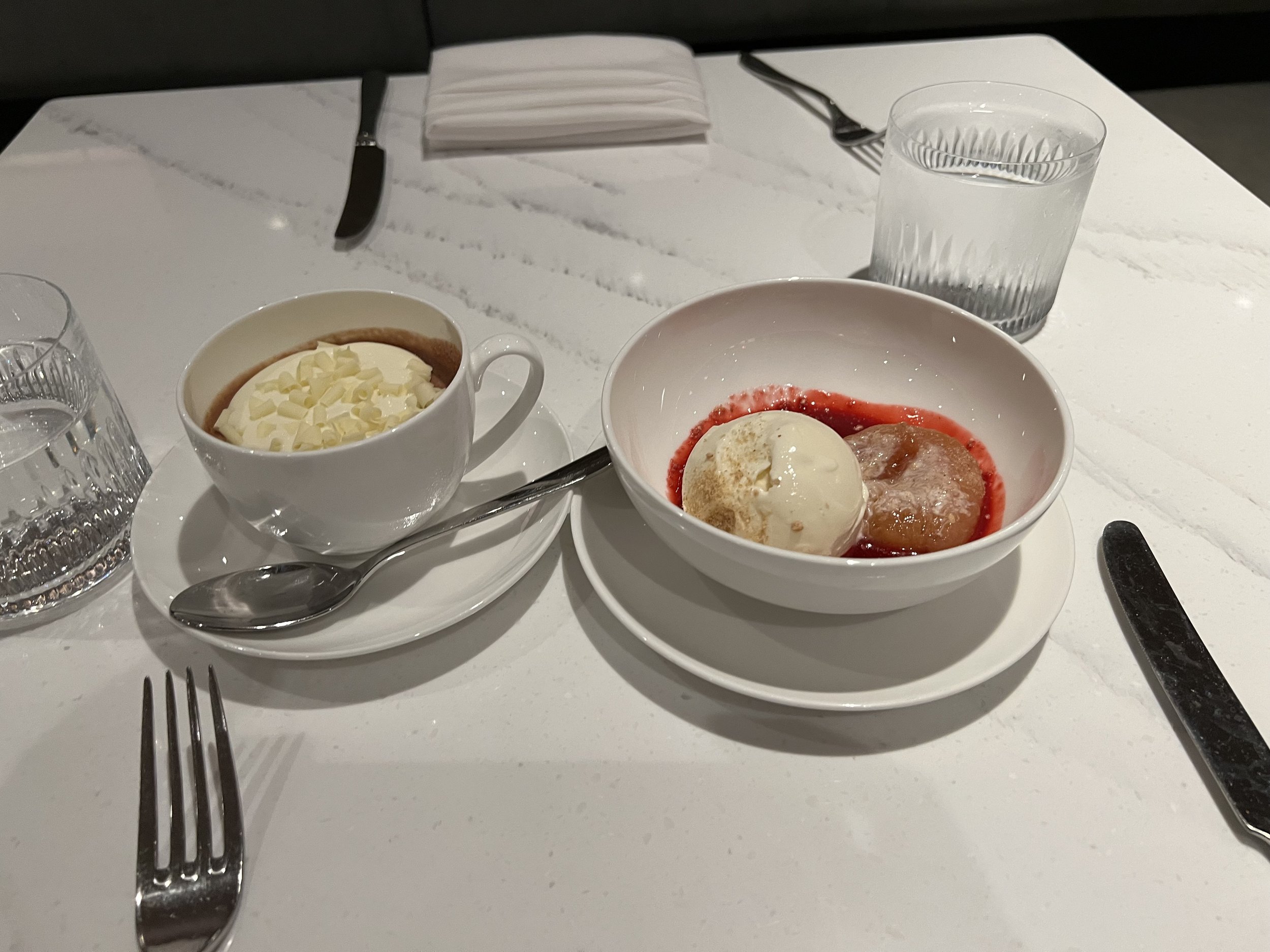
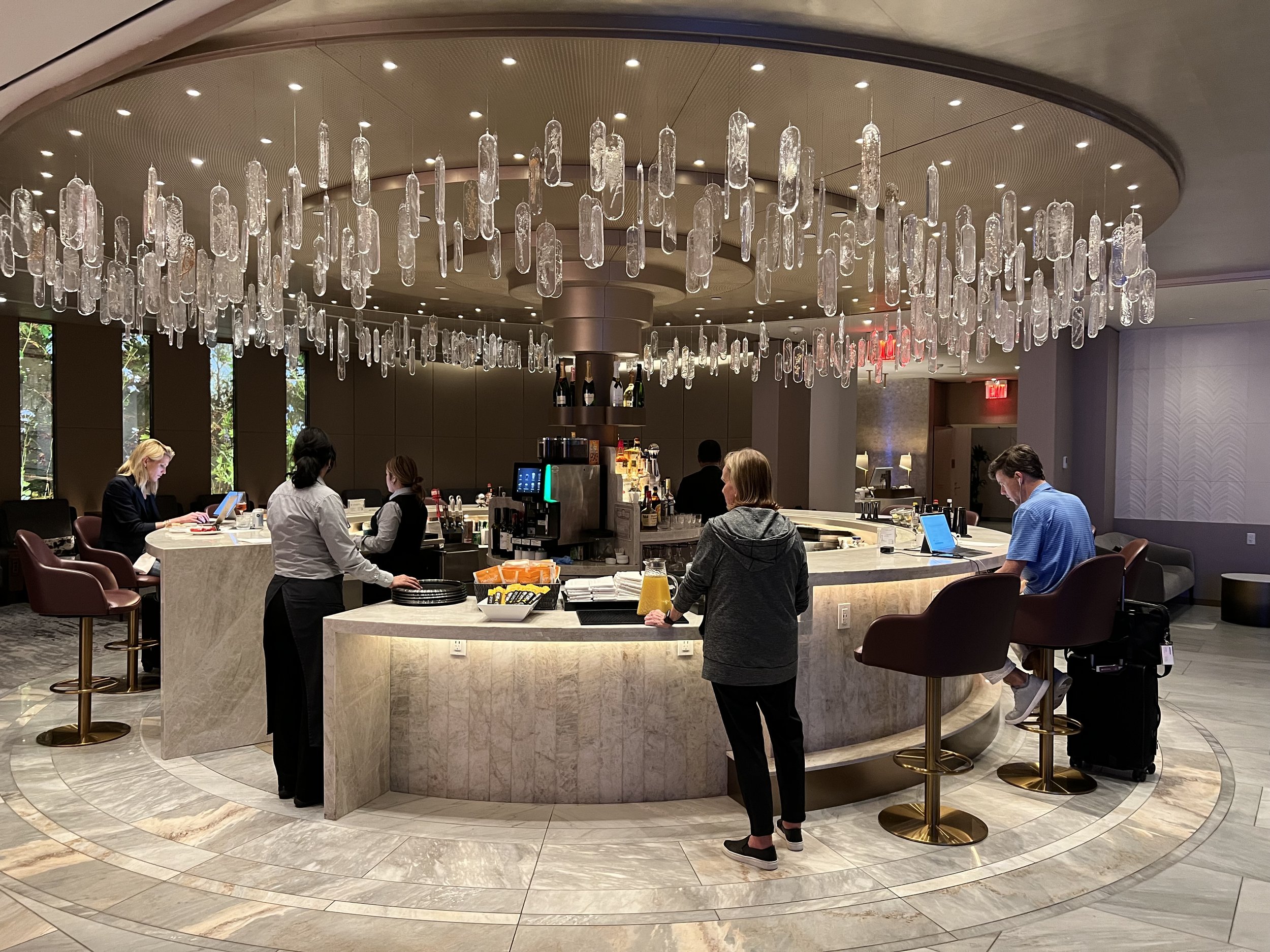
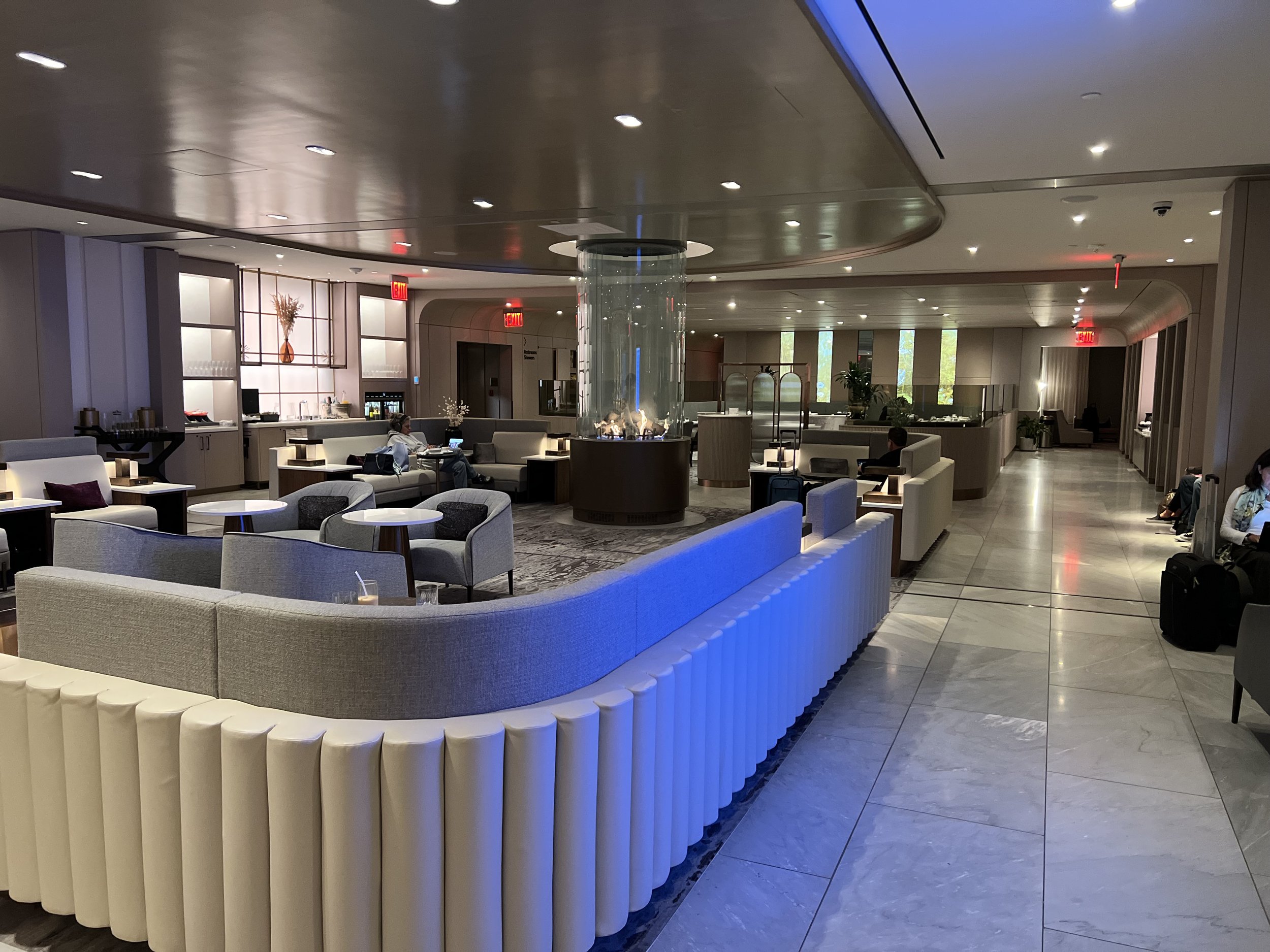
Off to one side of the lounge, is a snack bar that features fruit, cookies, and packaged dried fruits. One of the advertised highlights is the fireside lounge, the literal centerpiece of the Chelsea Lounge. It is an area with seating for almost 24 people positioned in the middle of the room. In its center is a glass fireplace that extends through the ceiling. During my visit, the fireplace was turned on and truly gave the lounge a homey feeling.
At 09:30, I headed downstairs to my gate, where boarding was already underway. Starting at 06:00, American operates flights between New York and Los Angeles every 90 minutes, all with its A321Ts. I was on AA255, which was scheduled to depart at 09:59 from Gate 1 and arrive at LAX at 13:20, with a flight time of six hours and 21 minutes.
Welcome Onboard
After quickly boarding the single-aisle A321T, I walked through the Flagship First cabin, which features 10 Zodiac reverse herringbone seats in a 1-1 configuration, to my 9A seat in the Flagship Business cabin. In my seat, I found American Casper bedding, consisting of a pillow and a duvet, and a menu for the flight. Also waiting for me were a bottle of water and a Shinola amenity kit stashed in the storage area over my left shoulder. The storage area also had a universal power outlet, a USB port, and a headphone socket. The amenity kit was well-stocked, with an eye mask, earplugs, dental kit, pen, socks and D.S. & Durga hand lotion.
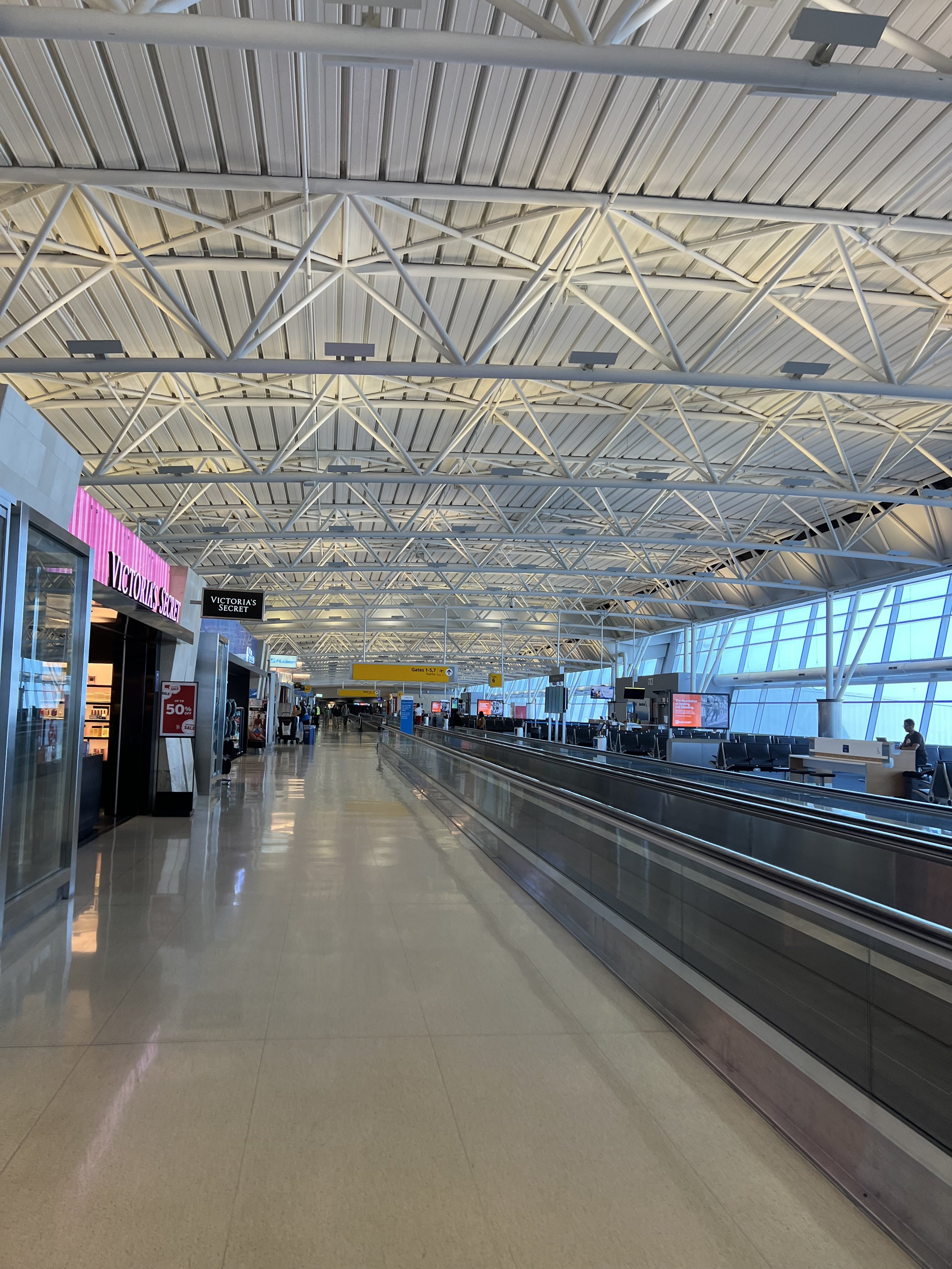
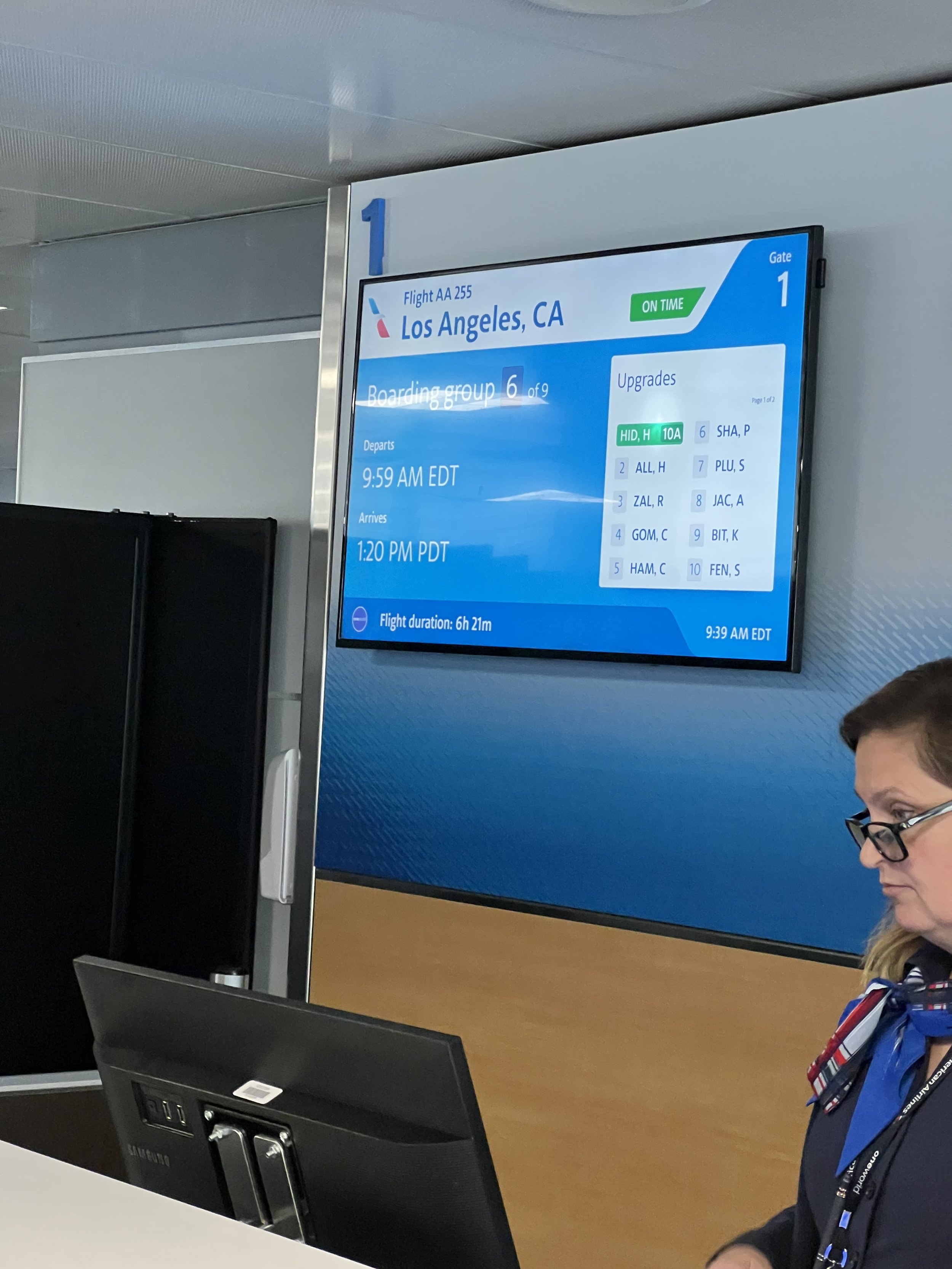
In the storage area under the inflight entertainment screen (IFE) were complimentary Bang & Olufsen H9i headphones, which were comfortable and included a noise-canceling function that worked really nicely. These were the same noise-canceling headsets that American provides for international Business Class flights.
As soon as I had sat down, a friendly Flight Attendant came over to take my pre-departure beverage order. As it was still the morning, I requested an orange juice, which arrived within a few minutes along with a serving of warm nuts.
Inside The Cabin
Our flight was operated by an Airbus A321-200, registered N115NN and powered by two IAE V2500-A5 engines, which had been delivered to American in April 2014. While the typical Airbus A321-200 can accommodate around 200 passengers in a two-cabin configuration, American’s A321T seats just 102 passengers. In addition to holding 50% fewer passengers, the A321T has other noteworthy features such as aisle access for all First Class passengers, lie-flat seats for Business Class ones, and additional legroom in most of the main cabin.
The four cabins into which the plane is divided respectively feature 10 reverse-herringbone Flagship First Class, 20 Flagship Business Class, 36 Main Cabin Extra, and 36 Standard Main Cabin seats. Notably, a galley and lavatory separate the First and Business Class cabins, something rarely found on a single-aisle plane.
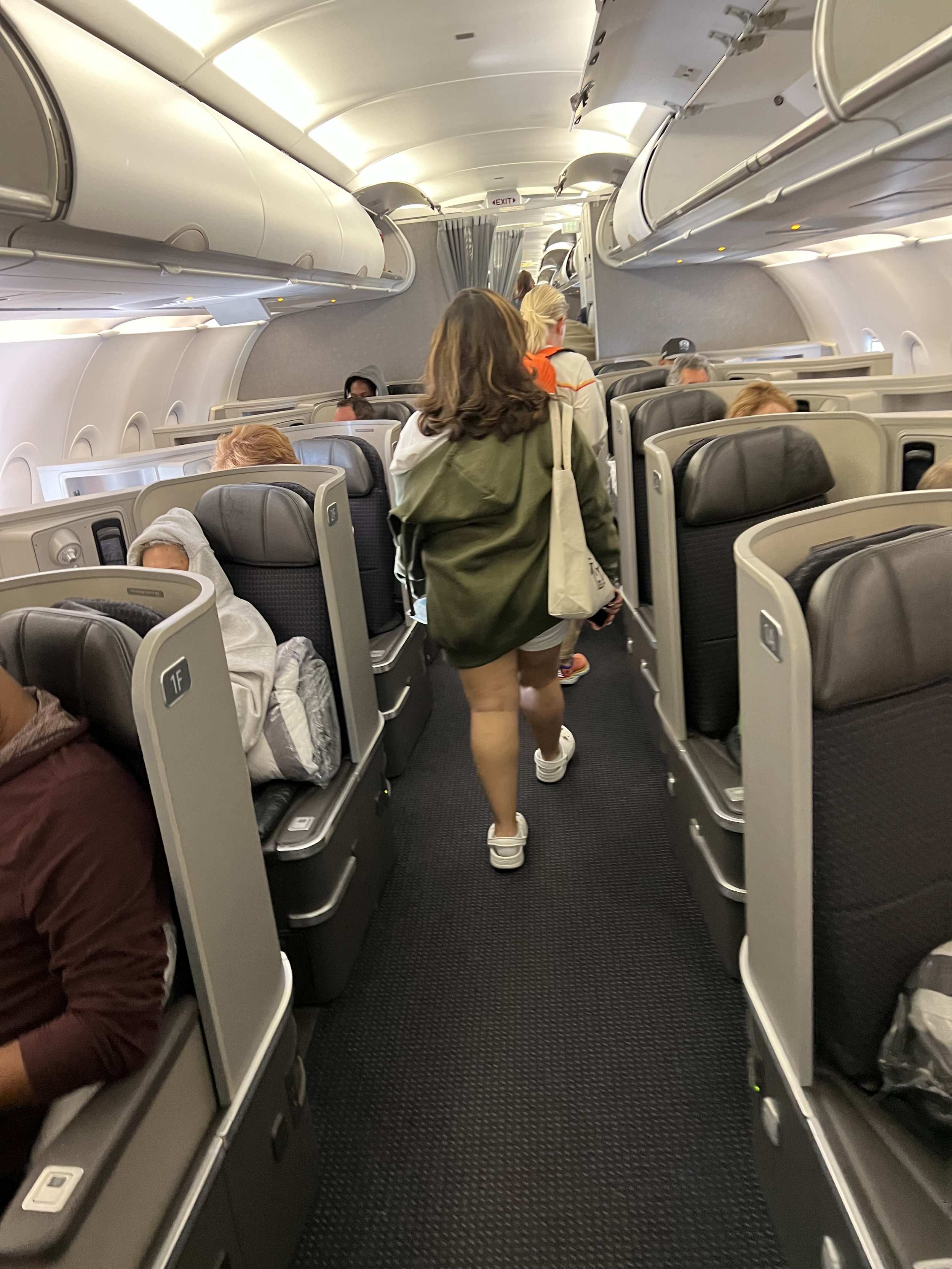
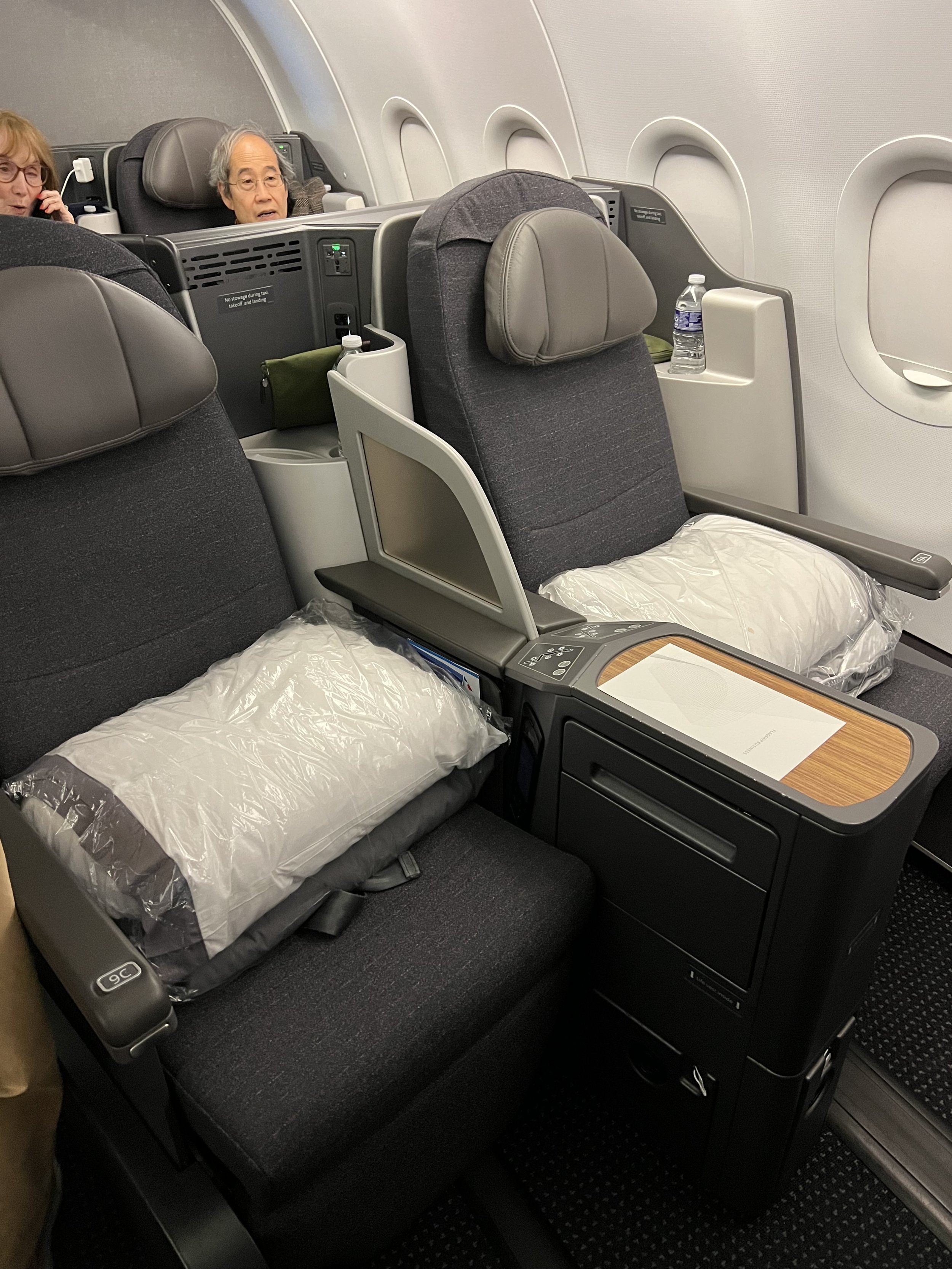
The 20 seats in the Flagship Business cabin are located in the middle of the aircraft, spread across five rows arranged in a slightly staggered 2-2 layout. The Flagship cabin uses the B.E. Aerospace Diamond, an angled fabric-covered lie-flat seat; when you're slightly reclined, you can't directly see your neighbor. All the Flagship Business Class cabin seats can be converted into true lie-flat beds. They have 58 inches of pitch and 19 inches of width and can rotate 180 degrees into full lie-flat beds with a length of around 81 inches. I found the seat to be extremely comfortable and to provide a lot of room for my head when in bed mode. I was able to sleep for a little over an hour and a half. As I was in a window seat, I had to climb over the person next to me to access the aisle. The aircraft features individual air vents and large overhead bins in which I had no problem fitting my backpack and four-wheel carry-on.
As this is a narrow-body aircraft, the 2-2 layout affords only limited storage: a small shelf behind the seat, a shared fixed table between the seats, and a thin storage area underneath the IFE.
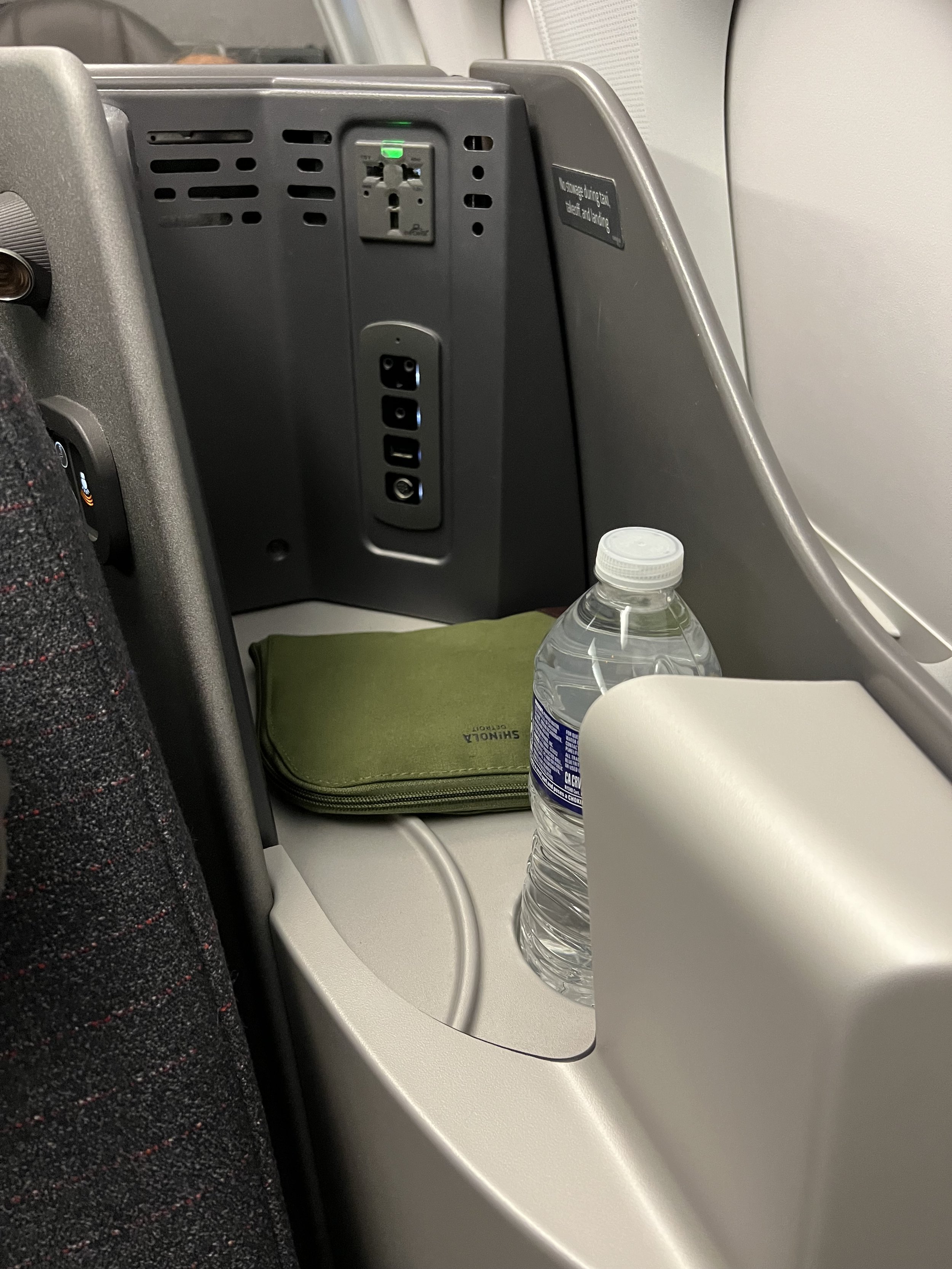
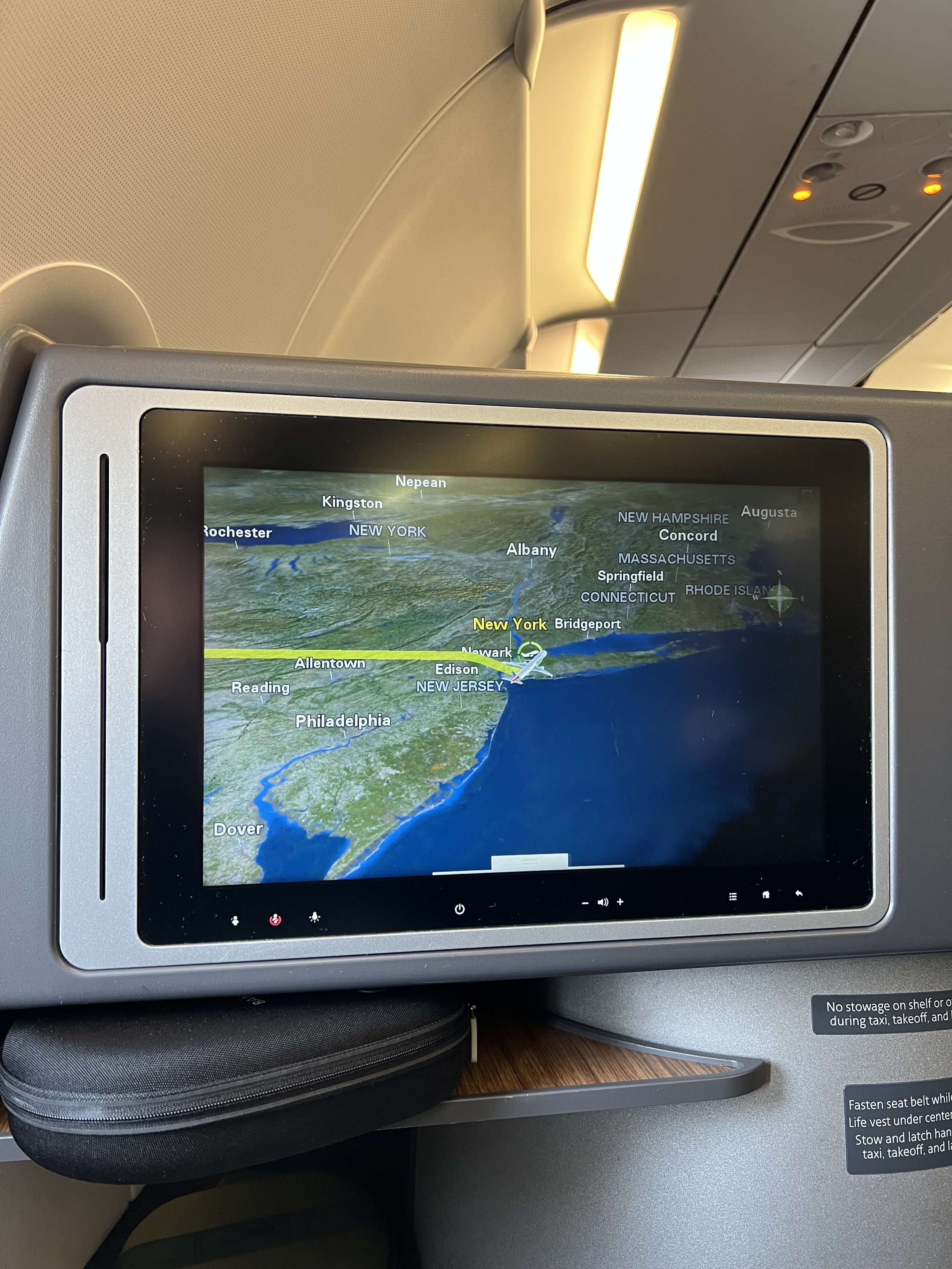
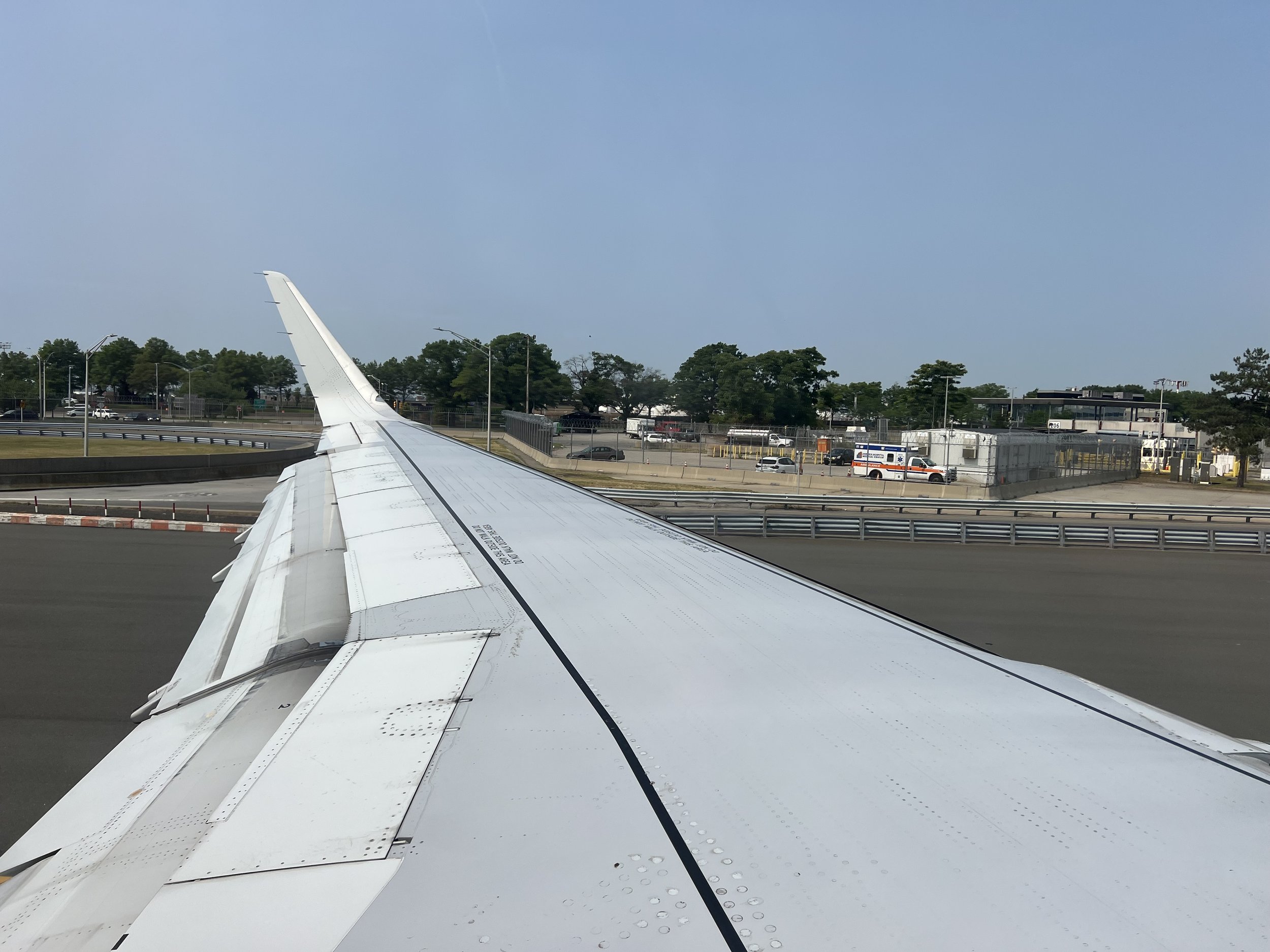
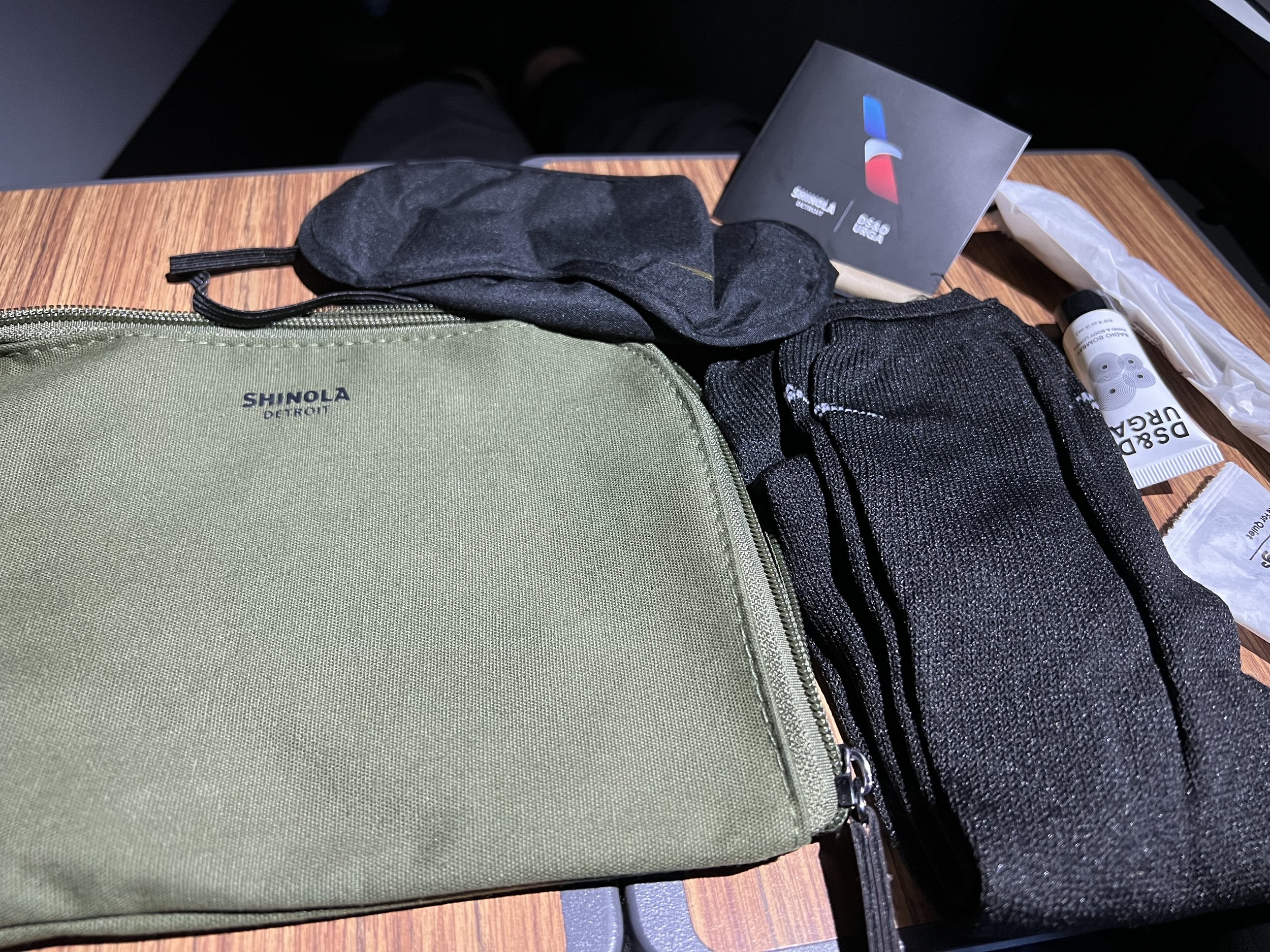
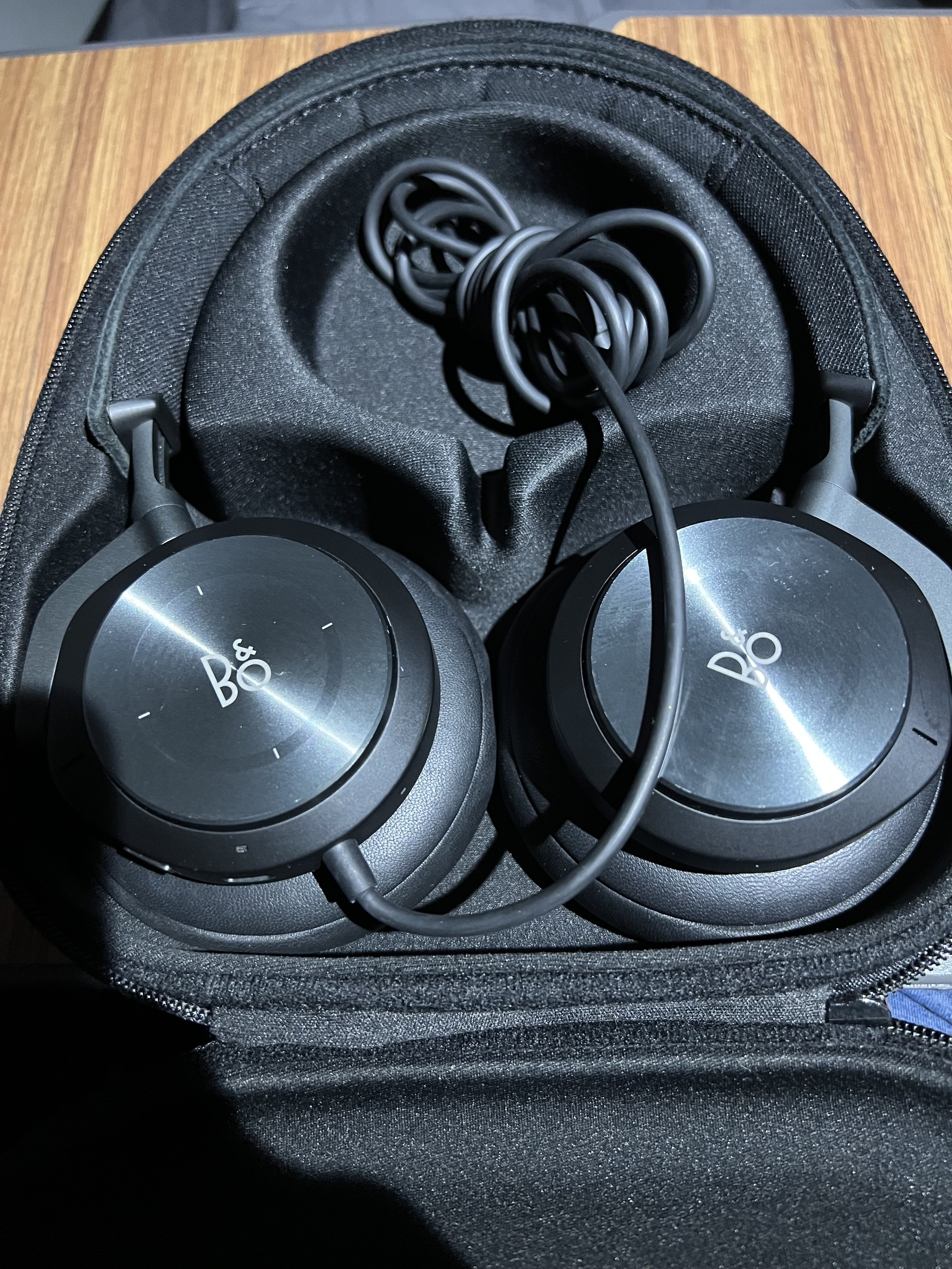
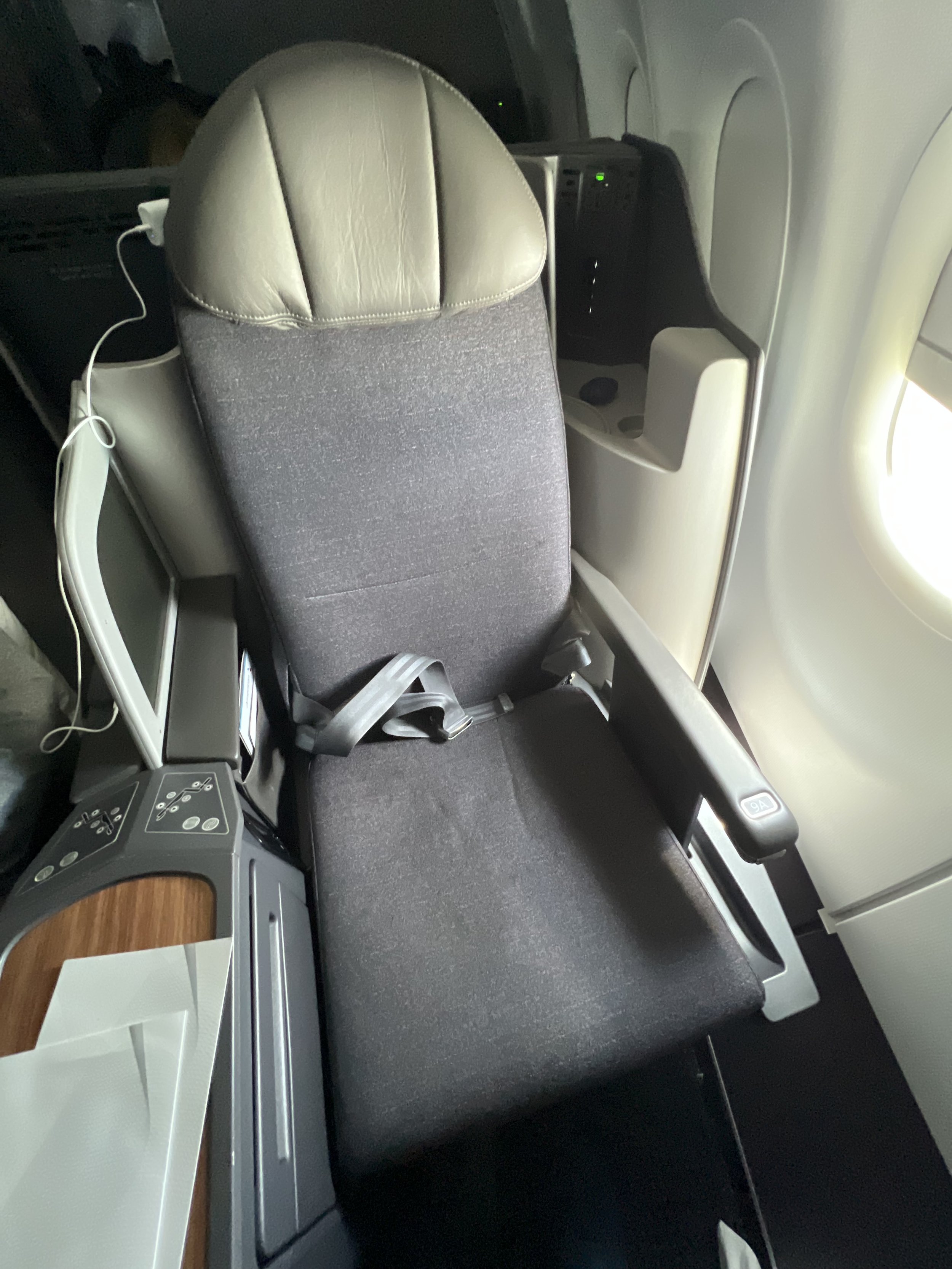
We pushed back from our gate at 09:58, one minute ahead of schedule. We taxied past JetBlue's hangar and, after a little over 10 minutes, we lined up on Runway 4L/22R for a southbound takeoff. At 10:14, we started our takeoff roll down the 8,400ft (2,560m) runway and, before I knew it, we were airborne.
Having made a right bank northwestward, we began our flight plan. In a little more than 25 minutes, we reached our initial cruising altitude of 34,000ft as we passed over State College, Pennsylvania. Our route would take us over 10 states before arriving in Los Angeles.
Spot-On Service
Once the seatbelt sign had been turned off, the Flight Attendants began offering hot towels and beverages, which would be followed by lunch. For the appetizer, there was a roasted beet and goat cheese timbale or a seasonal greens salad. There were four options for the entrée: gorgonzola-crusted beef filet, golden roasted chicken, seasonal vegetable and grain bowl, and porcini tortellini. For dessert, there were three choices: a traditional ice cream sundae, a gourmet cheese plate, and a classic lemon tart. Lunch ended at 12:00, and the Captain turned off the cabin lights.
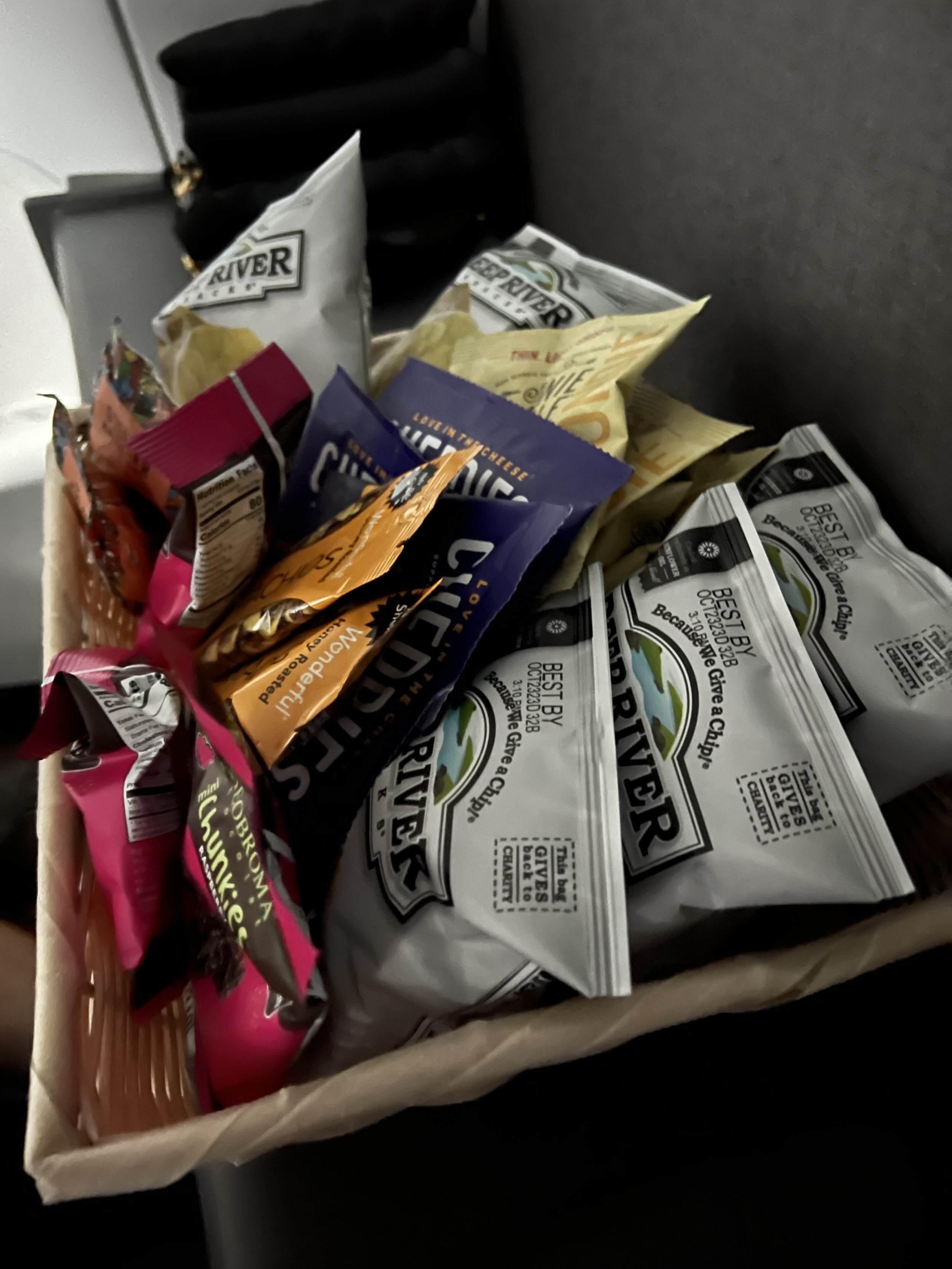
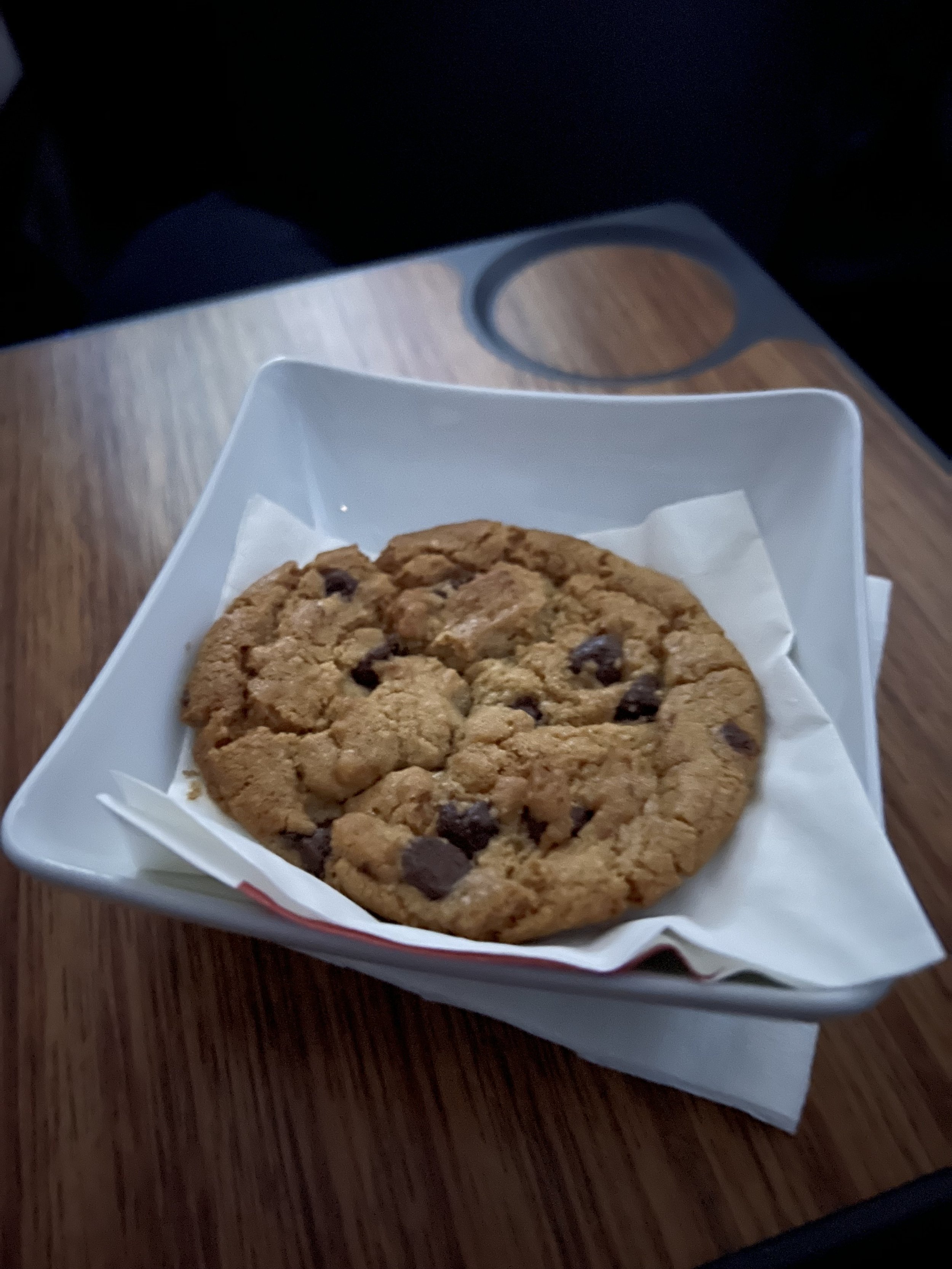
Both the tray table and the seat controls are located in the central armrest. The seat has three main controls that can be operated individually: seat recline, leg rest extension, and lumbar support. The seat’s tray table is stored within the console and is easy to pull out. The wood-finished tray table is the one that American uses throughout all its Business Class cabins. It is large-19.5 inches wide by 11 inches long–and offers plenty of space for a laptop. The table can substantially slide forward and is sturdy even when fully extended.
Amenities
The 15.4-inch inflight entertainment high-def screens facing each seat offered plenty of options. At the bottom of the IFE screen are buttons for lighting, power, volume, calling the Flight Attendant, and others. Although the IFE is equipped with a touchscreen, an extendable remote control is also built into the seat wall. I could choose among 190 movies, 125 TV shows, 100 music albums, and 20 games. Everything worked perfectly, and the content–including Oscar-winning short films and relaxation videos–was great. Live TV was available but only by streaming it to one’s own device. The flight map was especially good. Wi-Fi was also available to purchase.
The cabin looks very similar to the one American Airlines used to offer on its now long-gone Boeing 757s, but with actual monitors for inflight entertainment instead of tablets.
Throughout the flight, the cabin crew came around every hour to offer drinks. Our Flight Attendant was extremely personable, and we conversed about American Airlines for 20 minutes. The amazing crew truly made this a great Flagship Business experience.
A second service, consisting of a snack basket and another round of drinks, came three and a half hours into the flight. Snacks were also available in a bin located in the forward galley.
The Business Class cabin features one lavatory at the front. It has an updated design similar to those found on American's international Business-Class and was well-maintained throughout the flight.
Landing At LAX
Four-and-a-half hours into the flight, as we soared over Arizona, the Flight Attendants came over to offer an end-of-flight warmed-up chocolate chip cookie. Forty-five minutes before landing, they collected the Bang & Olufsen headphones, as is normal for American Airlines flights.
This was a lovely flight in Flagship Business on American Airlines. The transcontinental service is a cut above that offered on shorter domestic routes, with lie flat seating, more comprehensive meals and better drinks
At 12:20 local time, we began our final approach and crossed over to Ontario, California. Eleven minutes later, at 12:31, we touched down on Runway 07R/25L at Los Angeles International Airport. After a five-minute taxi, we arrived at Gate 45 more than 40 minutes ahead of schedule. After a wait of about five minutes, a jet bridge was attached to the aircraft, and we began deplaning.
Bottom Line
Overall, I had a wonderful experience and would definitely fly American Airlines on this route again. American Airlines' A321T is a great way to travel cross-country in Business Class. The flight was great, and the Flight Attendants were very attentive and provided excellent service. They were exceptionally kind, and I had a great time speaking with them about American Airlines and their past flights.
American Airlines definitely stands out from its competitors with its excellent service and product. I look forward to also testing out its competitors someday to see how they compare to AA on this very popular and lucrative route.

